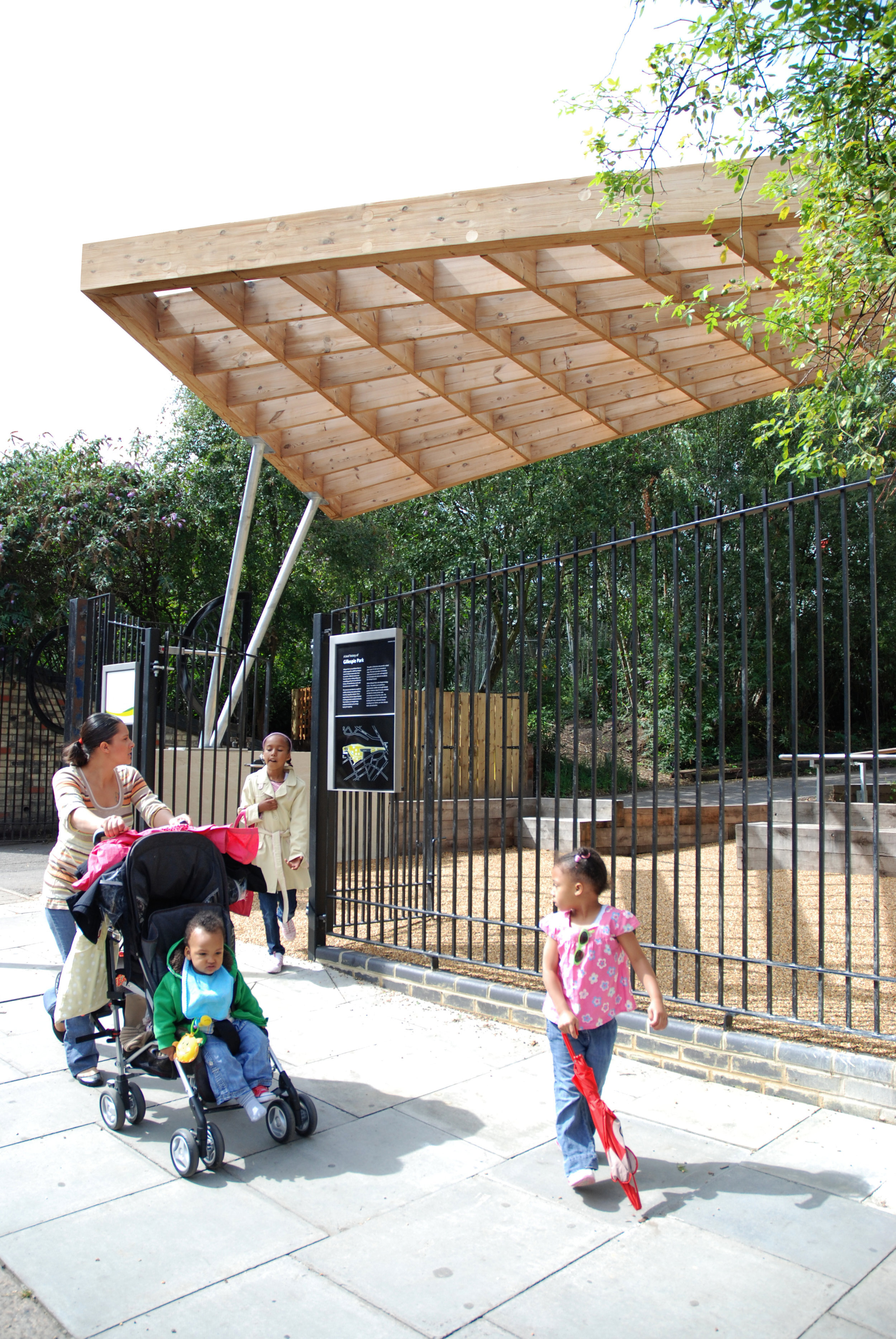
GILLESPIE PARK.
Highbury, London
As an extension to an urban nature reserve, this new facility provides the public, particularly young children, the opportunity to interact with nature whilst enjoying the thrill of adventurous play in this heavily populated and built-up part of London.
Client: London Borough of Islington
Consulting engineer: Built Engineers
Canopy fabrication: Cowley Timberwork
Landscape contractor: RCP Landscapes
Phase 2 – Woodland Play
The new woodland play area in the Gillespie Park Nature Reserve has opened up an area of self-seeded woodland on heavily contaminated land.
At the heart of the playground is a ‘woodland clad’ accessed via boardwalks which weave through the birch trunks, incorporating natural play features including play boulders, wildlife viewing hides, woven willow domes, timber for constructing dens, native planting and pergola.
This new facility is used by schools, community groups for semi-structured play activities, as well as freely by local kids and parents.
For London Borough of Islington Greenspace.
Completed 2011
Phase 1- New Entrance
A new pedestrian entrance to Gillespie Park on the site of a derelict toilet block. The soaring timber lattice canopy announces the gateway to Gillespie Park and the Islington Ecology Centre.
Being in the shadow of Arsenal Football Club’s vast Emirate’s Stadium demanded a visually arresting response, whilst the ethos of the Ecology Centre is signposted through dramatic use of timber. The canopy establishes an organic relationship with the sie within, much of which is self-seeded woodland in an area of formar railway sidings.
Completed July 2009
The Project
Improving parking layout and facilities for bike parking and enhancing the setting of the Ecology Centre by treating this area as a welcome mat to the building.
Creating a defined link across the road to the extension area land, this should improve pedestrian safety, be accessible to all and be visually inviting.
New elevated walkway providing an exciting route through the birch wood with minimum impact on the fragile habitat
Existing birch woodland protected and enhanced by careful management.
A woodland clearing at the centre of the site allowing for diverse and flexible use.
New woodland area demonstrating use of traditional management techniques that also create valuable habitats e.g. coppicing.
Providing a secondary route allowing a more direct approach into the extension land when entering from Drayton Park, also allowing a circular route to be taken.









